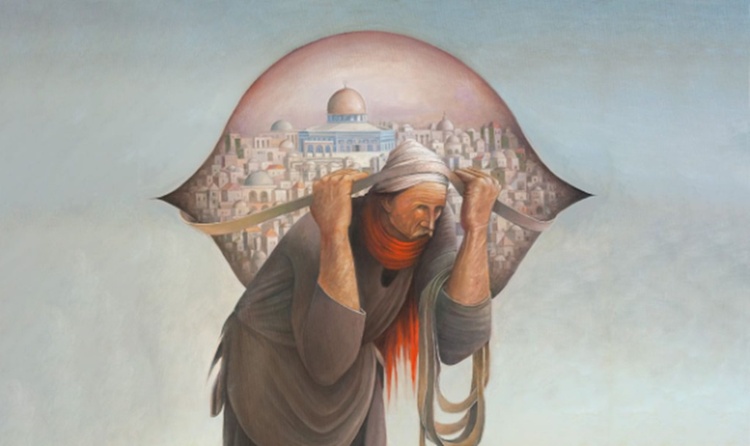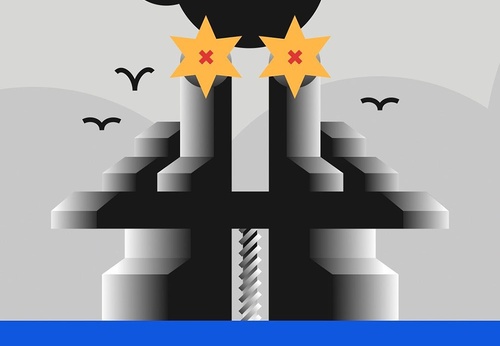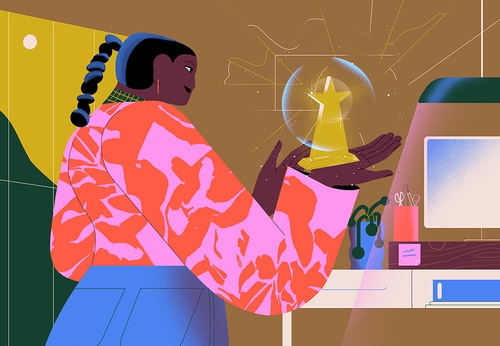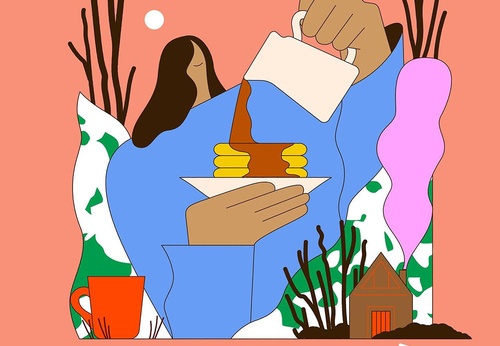
Sliman Mansour and Palestinian art on the battlefield
Artist born in Birzeit a year before Nakba was present at the 2002 São Paulo Biennial and won a UNESCO prize
Born 76 years ago in one of the few remaining Christian Palestinian cities, located in the center of the West Bank, Sliman Mansour is a prominent Palestinian artist and a standout among his contemporary peers. He began drawing at a young age and, later, a German tutor at a boarding school in Belém noticed his talent, encouraging the young man to delve deeper into painting and enter his works in art competitions.
Known as “the artist of the Intifada”, Mansour was in Brazil in 2002, when he participated in the 25th edition of the São Paulo Biennale, and was one of the winners of the Unesco-Sharjah Prize for Arab Culture, in 2019. The visual artist, author , sculptor and cartoonist also received the Cairo Biennale awards in 1998 and the Palestinian Prize for Visual Arts in 1998.
Mansour uses the brush and artistic practice as a resource for the revolutionary transformation of Palestine. In his works, he carries the flag of a colonized people, resistant and involved in a military occupation without truce or rules. His art is permeated by this reality, emphasizing the beauty and richness of colors and creating a concept of working with clay using Palestinian earth and with the product he began to sculpt and paint.
The artist began using this raw material in 1987, during the First Intifada. The choice of the peculiar material came from the need to rescue female ancestry, who used clay utensils at home. The use of Palestinian clay allowed him to capture the essence of Palestinian roots, contrasting with the fragmentation of the political and geographic landscape - echoed in the cracks that form in the mud as it dries. Other natural materials are used, such as coffee and hay.
Thus, he uses art as part of resistance. The brush is his weapon and establishes the relationship between people and land, between history and culture in his artistic work. Mansour aims to tell the living Palestinian story, while creating art from the events. His works show an artist who clings to a desire for life and self-determination for his country, and cities that are true open-air prisons, similar to Warsaw ghettos. Thinking about every detail of the artistic experience instead of drawing the earth, he decided to draw with the earth. In exhibitions, people feel your work – they feel the Palestinian heritage, by touch, smell, with their senses.
Read the full Opera Mundi interview with Sliman Mansour:
Opera Mundi: how is his art linked to the liberation process of the Palestinian people?
Sliman Mansour: the main challenge of Palestinian art arises from the persistent denial of the existence of the Palestinian people by Israel and a large part of the Western world, which makes the expression of Palestinian identity a fundamental issue. Given the abstract nature of identity, the search for visual symbols has become imperative, drawing inspiration from diverse sources. Ancient regional art, Islamic art with a focus on calligraphy, and folk art including costume, embroidery, traditional architecture, and village life have contributed to the rich tapestry of Palestinian artistic expression.
The landscape, with symbolic elements, such as orange trees that signify the land occupied in 1948 and olive trees that represent the 1967 occupation, played a fundamental role. International art addressing liberation has also provided valuable inspiration, contributing to the development of Palestinian identity and raising awareness for liberation from Israeli occupation. Despite global recognition after the Oslo Accords, recognition falls short of what is expected of Palestinians as full human beings, deserving of liberation and a dignified life. The current role, as perceived, involves challenging this attitude through various forms of art and culture, encompassing literature, film, theater, music and more.
Could you tell us a little about the artistic situation in Gaza and the rest of Palestine?
In the West Bank, there is a modest art market that plays a dual role, not only serving local artists but also offering a connection to artists from Gaza. The region has three galleries in Ramallah and Bethlehem. Furthermore, the artistic scene is enriched by the presence of an Art Museum at Birzeit University and an important institution, the Palestine Museum, also located in Birzeit. The Mahmoud Darwish Museum in Ramallah further contributes to the culture of the West Bank.
Meanwhile, in Gaza, a vibrant artistic movement has thrived, with diverse artists actively involved in the creative process. Art collectives collaborate, exhibiting their work, often at their respective headquarters. Unfortunately, the artistic community in Gaza suffered a setback with the bombing of the Ce
"Village" Arts and Crafts Center a few years ago. Despite the challenges, contemporary tools such as photography, video, montage and performance have become an integral part of the work of many artists in the region.
Finding ways to circumvent censorship is something Palestinian artists have long been familiar with. How did watermelon become a symbol of Palestinian identity and resistance?
During the tumultuous 1970s and 1980s, Israeli authorities demonstrated greater sensitivity toward artworks that addressed identity and occupation, resulting in the confiscation of several works by Palestinian artists. These artists often employed symbols to convey subtle messages, and soldiers often failed to understand their meaning. One notable episode involves an exhibition in 1980 at the then-exclusive Gallery 79: after the opening, soldiers violently emptied the gallery, locked its doors and took the keys. A month later, the gallery's director, Issam Bader, and two artists, including the exhibitor, were summoned by an official who, in a surreal discussion about "good art", suggested painting flowers and nude figures similar to those of the old masters. Interestingly, two orders were issued: works of art could not be displayed in the occupied territories without authorization from military censorship, and painting in red, green, black and white was prohibited. When asked about a flower painted in those colors, the officer's angry response highlighted the absurdity of the restrictions. The keys were returned, but upon reopening the gallery, three paintings were mysteriously missing. This incident prompted the artist to brief reporters, Palestinian artists, and international allies, including progressive Israeli artists. In 1998, Khaled Hourani pioneered the use of watermelon as a symbolic replacement for the Palestinian flag.
What is his message for the next generation of Palestinian artists?
I emphasize the importance of a sense of belonging and a focus on society as the main audience. Although individual art can reach European or North American galleries, it runs the risk of distancing artists from their people, the artist cannot forget his people.
What moved me about Palestinian visual arts is that artists portray their painting traditions as inspired by the ancient past and oral traditions and cultural narratives linked to life in Palestine. As a visual artist and a Palestinian, how do you see the impact of the arts on the current conflict?
Art, as an international language, serves as a powerful and peaceful means of conveying the Palestinian narrative to the world, shedding light on their struggles and ongoing occupation.


- July 12, 2025
Gallery of Illustration by Xoana Herrera from Argentina

- July 12, 2025
Gallery of Illustration by Justyna Stasik from Poland

- July 12, 2025
Gallery of Typographic Posters by Li Xu – China

- July 11, 2025
Works by Six Latin American Artists

- July 11, 2025
IdN Magazine Volume 21, No.4 : Pattern Special

- July 11, 2025
Gallery of Posters by Daniel Warner from USA

- July 11, 2025
YEMEN


- July 11, 2025
Works by Six Latin American Artists

- July 10, 2025
The Voice of Latino Art in the Heart of…

- July 09, 2025
Douglas proposed in front of the painti…

- July 08, 2025
Unprecedented Botero Exhibition in Guan…

- July 07, 2025
Last chance to view LATINOAMERICANO exh…

- July 07, 2025
The contemporary art exhibition was ina…

- July 02, 2025
Hugo Correa Exhibits at Museo Ralli San…

- July 02, 2025
The Exhibition That Reimagines the Past…

- July 02, 2025
The Major Exhibition "Before America" …

- June 29, 2025
Peruvian painter Gerardo Chávez dies at…

- June 29, 2025
ARCOmadrid 2026 Opens Call for Entries …

- June 29, 2025
José María Velasco: The Landscape Artis…

- June 26, 2025
It houses 40 legacies of Latin American…

- June 18, 2025
Winners of the “Holosaide” event announ…

- June 18, 2025
The Major Exhibition of the Malba Colle…

- June 16, 2025
Pedro Roth Exhibition at the National A…

- June 15, 2025
Malba Pays Tribute to Luis Felipe Noé w…

- June 15, 2025
Contemporary Italian Painting on Displa…

- June 13, 2025
Impacto da Arte Digital na Sociedade

- June 13, 2025
The Geometric Essence of Fanny Sanín on…

- October 08, 2023
Illustrations reflect the brutal Israel…

- December 25, 2023
The jury statement of the Iran-Brazil F…

- July 29, 2023
History of Caricature in Brazil

- April 20, 2024
Poignant Image of Grief Wins Mohammed S…

- September 01, 2023
Neural Filters in new photoshop 2023

- May 22, 2025
Brady Izquierdo’s Personal Exhibition O…

- March 21, 2024
The history of art in Palestine

- October 21, 2023
Erick Meyenberg and Tania Ragasol at th…

- March 14, 2024
museum of statue of van gogh

- May 25, 2025
Bordalo II to hold exhibition in Paris …

- August 09, 2023
Venezuela mural expresses solidarity wi…

- March 15, 2024
museum of sculpture of Salvador Dali

- May 20, 2024
Latin American Festival of Performing A…

- March 30, 2024
illustration websites in Latin America

- July 30, 2024
The artist from San Luis Mirta Celi rep…

- March 18, 2025
Works by Cuban Artist Eduardo Abela in …

- January 04, 2025
Material Art Fair 2025

- July 03, 2024
Newly discovered rock art in Venezuela

- June 24, 2024
The urban art that lives in Lima

- June 18, 2025
Winners of the “Holosaide” event announ…

- February 18, 2024
7 Ways to Understand What Visual Arts A…

- May 15, 2024
Eleven murals for Gaza painted across t…

- October 08, 2023
Illustrations reflect the brutal Israel…

- January 02, 2025
13 commemorations that will mark the cu…

- October 17, 2023
The influence of Latin American artists…

- December 25, 2023
The jury statement of the Iran-Brazil F…

- November 17, 2023
Fernando Botero's work is booming after…

- July 29, 2023
Piracicaba International Humor Exhibiti…

- February 03, 2024
THE HISTORY OF NAIF ART

- November 06, 2023
Heba Zagout: Palestinian artist murdere…

- February 01, 2025
A maior exposição de Botero em Barcelona

- July 02, 2024
One of the largest urban art galleries …

- December 10, 2023
Sliman Mansour and Palestinian art on t…

- July 20, 2024
First International Mail Art Biennial 2…

- September 01, 2023
Neural Filters in new photoshop 2023

- March 14, 2024
museum of statue of van gogh

- October 23, 2023
Controversy over the project that will …

- October 30, 2023
Palestinian turns images of the Gaza co…

- February 06, 2024
Bolivian artists will be at the 2024 Ve…

- February 08, 2024


